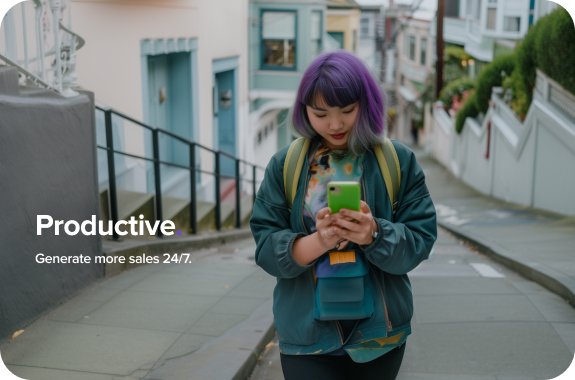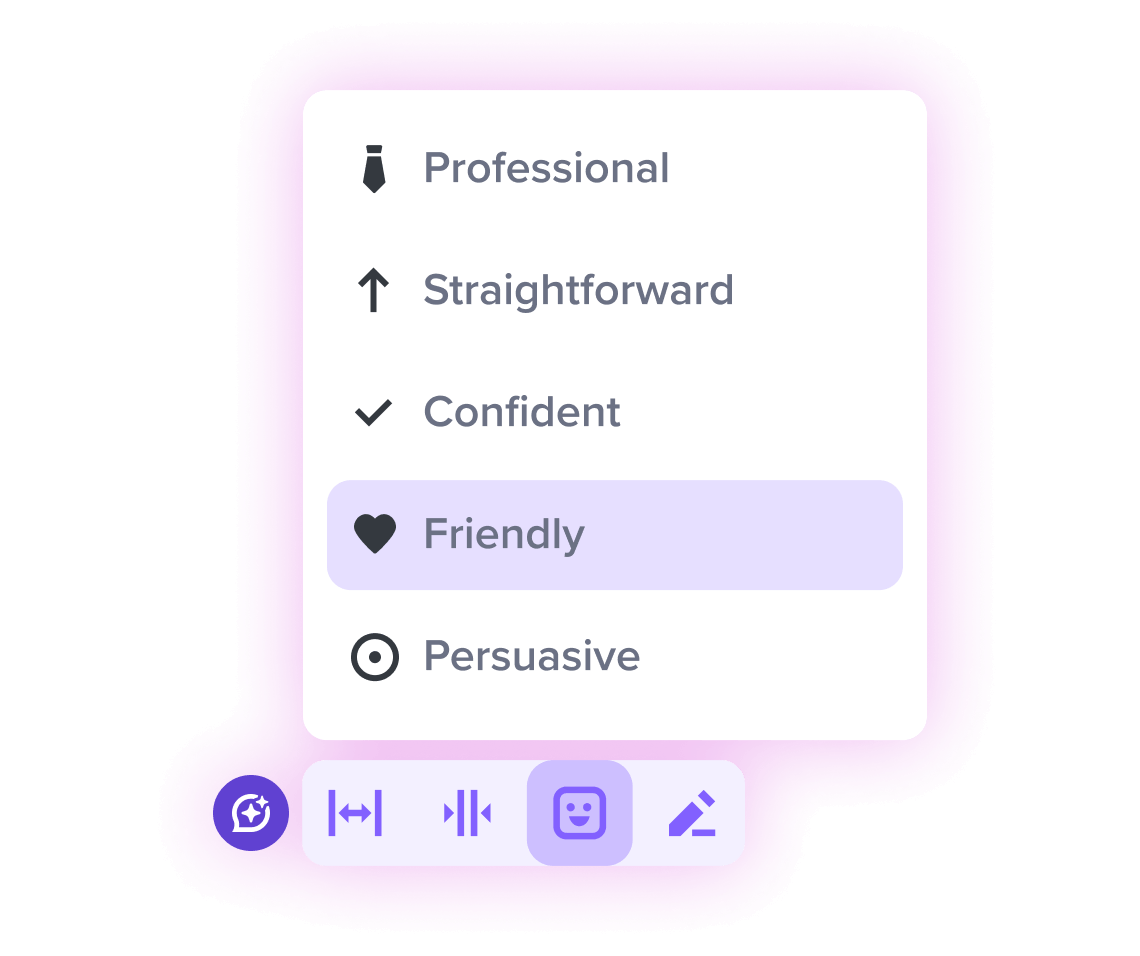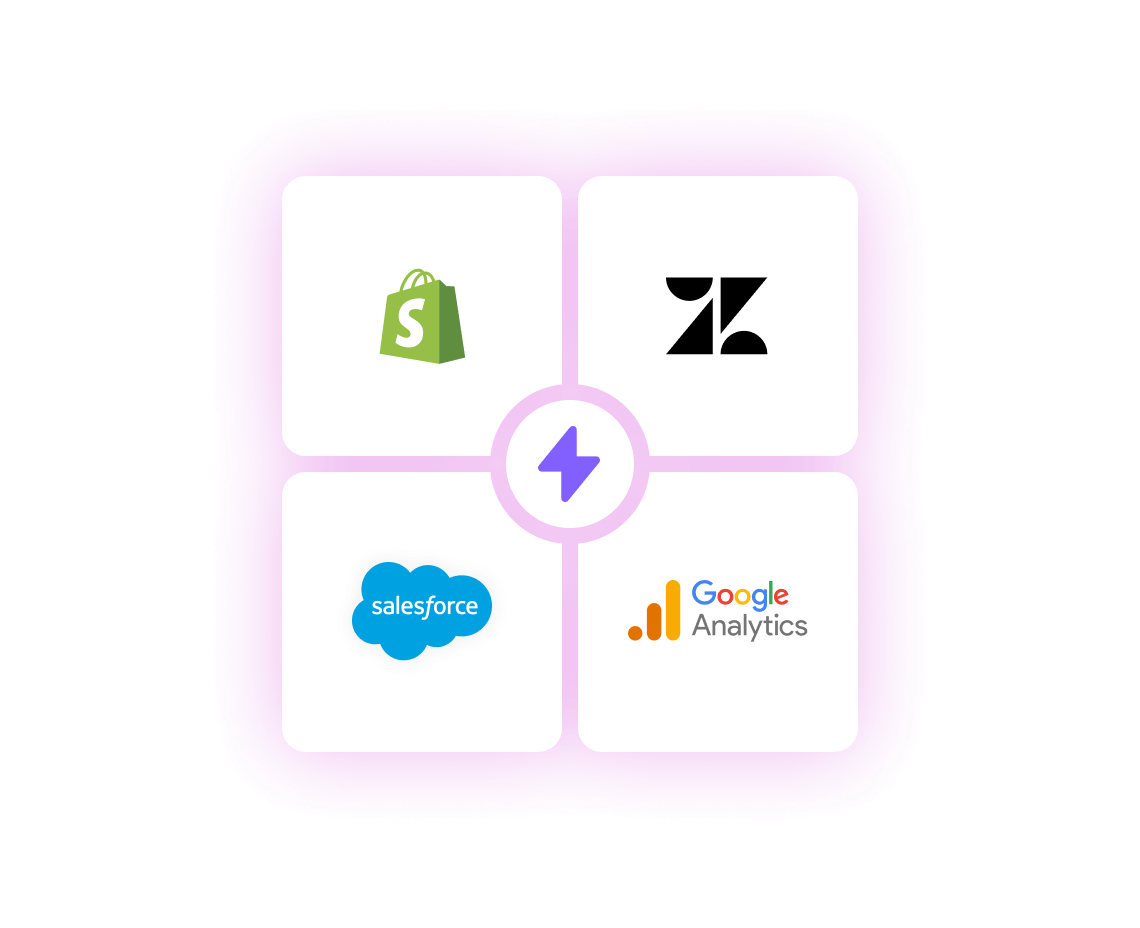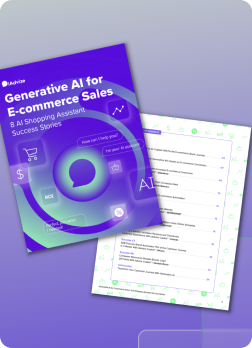Convert 10x more
with AI copilots for e‑commerce
- AI chat and shopping assistants to help customers
- your products.
-1.png)
.png)
-1.png)
.png)

.png)









Trusted by the most innovative e‑commerce brands.
.png?width=190&height=95&name=Brand=Samsung%2c%20Color=Mono%20(2).png)
.png?width=190&height=95&name=Brand=OtterBox%2c%20Color=Mono%20(4).png)
.png?width=190&height=95&name=Brand=Caudalie%2c%20Color=Mono%20(1).png)
.png?width=190&height=95&name=Brand=Decathlon%2c%20Color=Mono%20(1).png)
.png?width=190&height=95&name=Brand=Brother%2c%20Color=Mono%20(4).png)
.png?width=190&height=95&name=Brand=Nespresso%2c%20Color=Original%20(1).png)
Customer journeys that lead to more orders
Improve Product Discovery
80% of customers give up on search and then abandon your site.
Offer them an AI assistant to explore their needs and recommend the most relevant products.
Increase Add-To-Cart Rate
Stop forcing customers to scroll through product details. 50% don’t find what they need.
Use AI to anticipate customers’ needs and make it easier to decide.
Boost Sales With AI
Go beyond general FAQs. The most important question to a customer is their own.
Answer pre-sales and post-sales questions with AI. For customers who need extra support, connect them with super agents who use AI to help more and sell more.
High quality AI conversations,
increased conversions
AI made easy
Tailored to your e‑commerce business
Design AI shopping assistants that know your brand, products, buying guides, and policies.

Easy integrations
Easily plug into your e-commerce platform, CRM, and user experience. Launch instantly with one-click Shopify integration.

Secure and compliant e‑commerce AI
Work with a partner that complies with GDPR and CCPA and is ISO 27001 certified, ensuring data integrity and privacy.

The iAdvize platform's adaptability allowed us to transform how we engage with our customers. iAdvize has an amazing team and we were able to continually optimize conversion rates, resulting in a meaningful impact on our bottom line. Furthermore, iAdvize is on the forefront of conversational AI technology. Their offering on agent Co-Pilot is very impressive and practical to implement. I recommend the platform for any brand looking to maximize and deliver on its potential.
Verified User in Consumer Electronics
Mid-Market (51-1000 emp.)

Generative AI for E‑commerce Sales:8 AI Shopping Assistant Success Stories
See how brands across industries have increased their online conversions and optimized costs by launching an AI copilot on their website.

.png)
.png)



